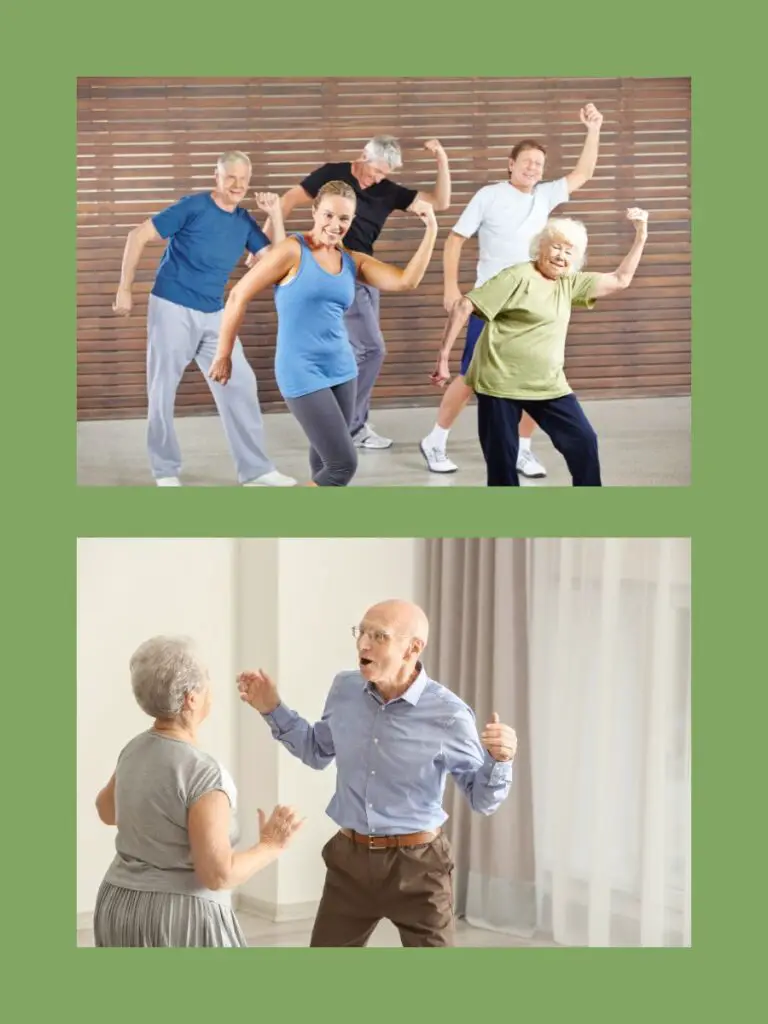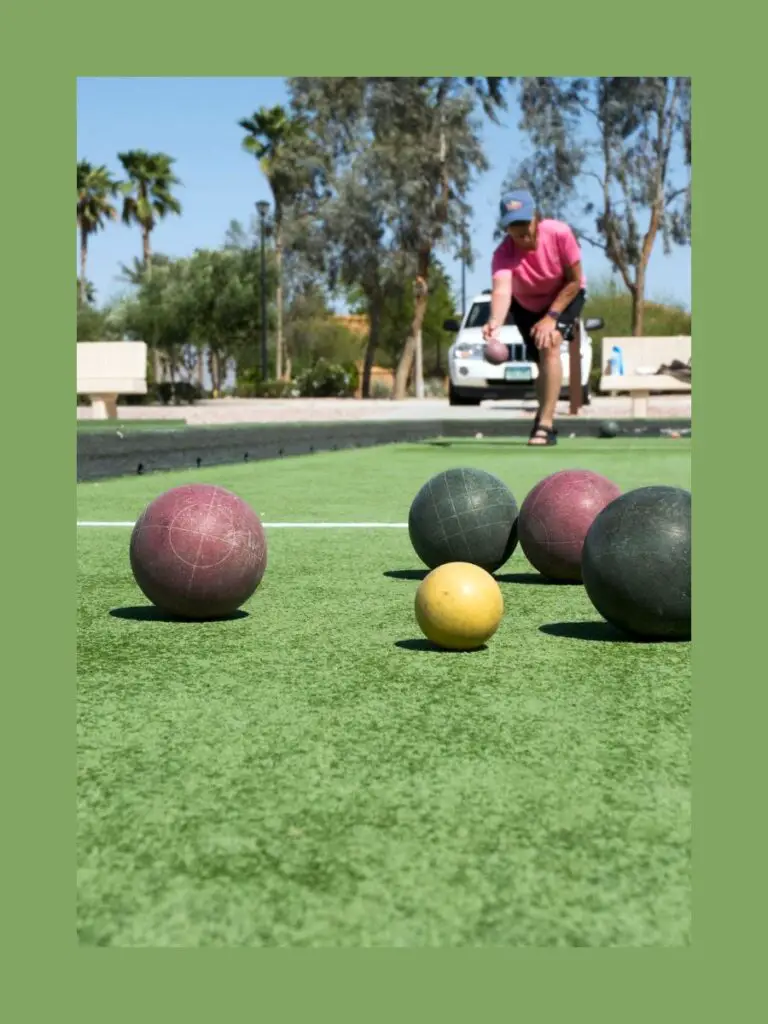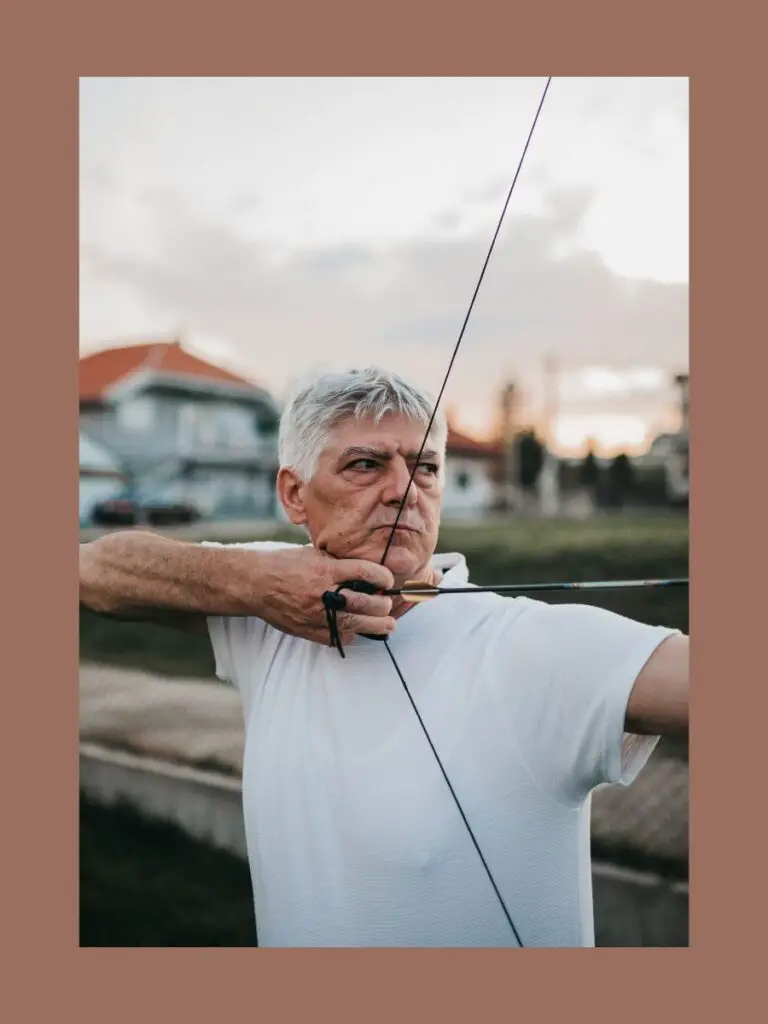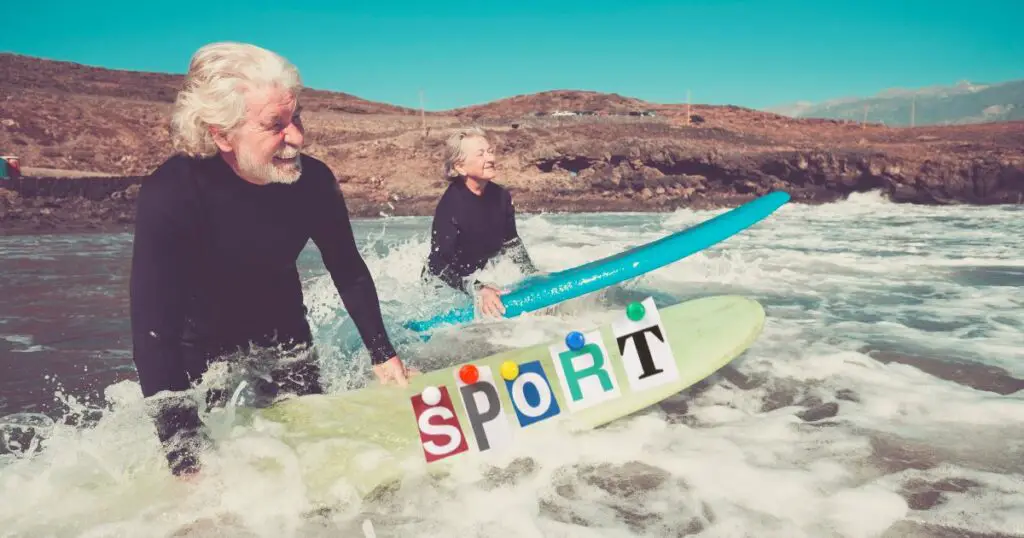As an Amazon affiliate, I may earn from qualifying purchases. Please read our Disclaimer and Privacy Policy.
Competitive sports for adults over 50 offer a unique opportunity to maintain physical fitness while building social connections.
Staying active is essential for maintaining a healthy lifestyle, especially as we age.
Of course, it’s important to remember that everybody is different. Some people are naturally more adapted to heavy physical activity than others.
Disclaimer:
I’m not a medical professional, so please follow the advice and guidance of your own medical team over anything you read here.
This blog post is designed to illuminate the possibilities that a variety of sports can offer healthy adults over 50, and is not meant as a resource to diagnose, advice, or suggest medical treatment.
Always consult a physician before engaging in physical exercise.

Benefits of Competitive Sports for Adults Over 50
You don’t have to look hard to find the benefits of physical activity. BioMed Central, for example, reports that vigorous physical activity can significantly reduce the risk of coronary heart disease (CHD) and overall cardiovascular mortality.
Engaging in competitive sports offers numerous benefits for adults over 50, encompassing physical, mental, and social aspects.
Here’s an overview of these benefits, supported by research and expert opinions:
- Vigorous exercise can help improve cardiovascular health and improve blood circulation, potentially lowering the risk of heart disease.
- Muscle strength and endurance help maintain and build muscle mass, which is crucial for reducing the risk of falls.
- Sports that involve weight-bearing and resistance activities can help maintain bone density and reduce the risk of osteoporosis.
- Weight management.
- Flexibility and balance.
- Physical activity is associated with higher cognitive function and a lower risk of cognitive decline.(Academic OUP)
- Physical activity can reduce symptoms of depression and anxiety, enhance mood, and increase overall mental well-being. (World Health Organization)
- The WHO also identifies improved sleep through regular physical activity.
- Social and lifestyle benefits
Risks of Competitive Sports for Adults Over 50
If you’re considering competitive sports, and you’re over the age of 50, you’re likely a very different person than I am.
I feel young at heart, but my body really feels my age sometimes.
The fact is that as our bodies age, we are more at risk of injuries. According to Athletico Physical Therapy, the most common musculoskeletal injuries in adults over 50 include the following:
- Muscle strains
- Shin splints
- Stress fractures (most common in the lower extremities)
- Achilles Tendon tears
- Plantar Fasciitis
- Osteoarthritis
- Adhesive Capsulitis (progressive loss of shoulder motion)
- Rotator cuff injuries
- Golfer’s elbow
- Tennis elbow
- Tendonitis of the biceps tendon or tear
- Wrist injuries
Even with all of the potential injuries mentioned above, it’s still a good idea for adults over 50 to stay active as much as possible.
I’ve always been an active person, although I’ve never been involved in competitive sports.
As I move closer to age 60, I’ve noticed a drastic change in how easily I get injured. While I can still engage in the same vigorous activity I used to, my body is screaming at me to take it down a notch.

Competitive Sports For Adults Over 50
If you’re looking for competitive sports for adults over 50, you’re in the right place.
The following list is an idea of specific sports and activities that anybody can engage in. Doing it safely is a matter of listening to your body and your physician.
We’re all built differently, and it’s important to honor that.
Some of the activities below might make you roll your eyes in disbelief, while others might inspire you to give them a try!
Individual Sports
These sports not only provide physical health benefits but also promote mental well-being and social interaction, essential components for a healthy lifestyle in later years.
Always consult with a healthcare provider before starting any new sport, especially if there are pre-existing health conditions.
1. Swimming
Swimming is a low-impact sport that is excellent for cardiovascular health and overall fitness.
It provides a full-body workout while being easy on the joints, making it ideal for older adults who want to maintain an active lifestyle.
Swimming is a great way to improve muscle strength and endurance while boosting metabolism.
Public pools often offer a variety of swim classes for all ages, including a shallow pool for walking in.

2. Tennis
Tennis improves hand-eye coordination and cardiovascular endurance. It’s a dynamic sport that helps build agility, strength, and mental sharpness.
While tennis will provide a good workout, it’s especially important for older people over 50 to warm up properly. See a footwear specialist for proper sneakers, and listen to your body to prevent injury.
3. Golf
Golf promotes walking, balance, and mental focus. It’s a social sport that combines physical activity with strategic thinking.
4. Cycling
Cycling is a low-impact aerobic exercise that builds endurance and muscle strength. It’s suitable for those looking to improve cardiovascular health without putting excessive strain on the joints.
5. Running/Walking
Running and walking, including marathons and shorter races, are great for cardiovascular health. These activities help maintain a healthy weight and improve overall fitness.
6. Track and Field
Track and field events like shot put, discus, and javelin offer strength training benefits. They also enhance coordination and agility.
7. Table Tennis
Table tennis enhances reflexes and hand-eye coordination. It’s a low-risk sport that provides both physical and mental stimulation.
8. Bowling
Bowling improves hand-eye coordination and provides a social outlet. It’s a fun way to stay active with minimal risk of injury.
9. Archery
Archery enhances focus, concentration, and upper body strength. It’s a precision sport that combines physical and mental skills.
10. Triathlon/Sprint Triathlon
A triathlon combines swimming, cycling, and running, offering a comprehensive workout. It tests endurance and versatility, making it ideal for those looking to maintain high levels of physical fitness.
11. Powerlifting
Powerlifting builds muscle strength and improves bone density. It’s a sport that emphasizes lifting weights with proper form and technique.
12. Sailing
Sailing combines physical activity, strategic thinking, and teamwork. It’s a full-body workout that also requires mental focus. If you don’t have a sailboat of your own, consider visiting the local yacht club and asking for lessons.
13. Fencing
Fencing enhances agility, coordination, and mental acuity. It’s a fast-paced sport that involves strategic combat skills.
14. Martial Arts
Martial arts provide a full-body workout and improve balance and flexibility. They also offer self-defense skills and mental discipline.
15. Badminton
Badminton is a fast-paced sport that improves reflexes and cardiovascular health. It’s suitable for all fitness levels and offers a fun way to stay active.
Team Sports
Team sports provide a great outlet for socializing, making friends over 50, and enjoying the camaraderie of like-minded individuals.
You can usually find the following types of team sports in your specific age group by checking with your local YMCA, local senior center, online platforms and social media, or through the recommendation of local healthcare providers.
16. Softball/Baseball
Softball and baseball enhance teamwork, coordination, and fitness. These sports offer both physical and social benefits.
17. Volleyball
Volleyball is great for building upper body strength and cardiovascular endurance. It promotes teamwork and strategic thinking.
18. Basketball
Basketball is excellent for cardiovascular health and teamwork. It involves running, jumping, and quick movements that build strength and endurance.
19. Soccer/Walking Football
Soccer and walking football promote cardiovascular health and social interaction. Walking football is a lower-impact version suitable for older adults.
20. Hockey (Field/Ice)
Hockey builds endurance and teamwork skills. Both field and ice hockey provide intense physical workouts.
21. Rowing
Rowing is great for cardiovascular health and teamwork. It requires synchronized movements and builds upper body strength.
22. Pickleball
Pickleball is a mix of tennis, badminton, and table tennis. It’s suitable for all fitness levels and enhances hand-eye coordination.
23. Curling
Curling enhances balance, coordination, and teamwork. It’s a strategic sport played on ice.
24. Rugby
Walking rugby offers a lower-impact version of rugby, suitable for older adults. It promotes cardiovascular health and social engagement.
Low-Impact Sports

The type of exercise we do is less important than staying committed to a healthy activity that makes us feel good. If high-impact, competitive sports aren’t for you, consider any of the following options:
25. Tai Chi
Tai Chi promotes balance, flexibility, and mental well-being. It involves slow, deliberate movements and deep breathing.
26. Yoga
Yoga enhances flexibility, strength, and mental focus. It’s a low-impact activity that provides physical and mental health benefits.
27. Lawn Bowls
Lawn bowls improve precision and coordination. It’s a social game that offers both physical activity and social interaction.
28. Bocce
Bocce is similar to lawn bowls, enhancing coordination and providing a relaxing social activity.
29. Power Walking
Power walking is a low-impact way to improve cardiovascular health and stamina. It’s easy on the joints and suitable for all fitness levels.
30. Shuffleboard
Shuffleboard enhances coordination and provides a relaxing, social activity. It’s easy to play and great for maintaining mobility.
31. Dance (Ballroom, Salsa, etc.)
Dance promotes cardiovascular health, coordination, and social interaction. Different styles like ballroom and salsa offer various physical and mental benefits.
Water Sports
Some people were just born to be in the water. The following is just a small list of the many options available for older athletes. Many of these activities are considered low impact, but really pack a punch when it comes to getting the heart rate up.
32. Kayaking/Canoeing
Kayaking and canoeing are great for upper body strength and cardiovascular health. These activities also provide a scenic and enjoyable way to stay active.
33. Rowing
Rowing offers a full-body workout and is a great team sport. It builds cardiovascular endurance and muscle strength.
34. Water Polo
Water polo combines swimming with team strategy and endurance. It’s a high-energy sport that improves overall fitness.
35. Stand-Up Paddleboarding
Stand-up paddleboarding improves balance and core strength. It’s a low-impact water sport that offers a full-body workout.
In addition to the activities listed above, you could also try any of the following water sports:
- Swimming
- Aqua aerobics
- Snorkleing
- Scuba Diving
- Water yoga
- Aqua jogging
- Hydrotherapy exercises
A physical therapist, general practitioner, or certified personal trainer can help you find the best sports activities for you.
Multi-Sport Events
One of the best places to get involved with the senior games movement is through the National Senior Games Association. They offer Olympic-style multi-sport events that are held at the local, state, and national levels across the United States.
Each year, there are over 100,000 senior games participants. To find out how to get involved, visit the National Senior Games Association.
You might be interested in reading:
17 Simple and Safe Stretches For People Over 50
Summary
Engaging in competitive sports for people over 50 offers numerous benefits, making it a good way for active adults to enhance their overall well-being.
Participation in senior sports not only promotes regular exercise, which is crucial for disease control and maintaining high energy levels, but also fosters social relationships and friendly competition, both of which are vital for mental health.
Embracing these activities in later life can significantly improve life expectancy and quality of life, proving that staying active is not just about physical health, but also about enjoying a vibrant, connected, and fulfilling lifestyle.

